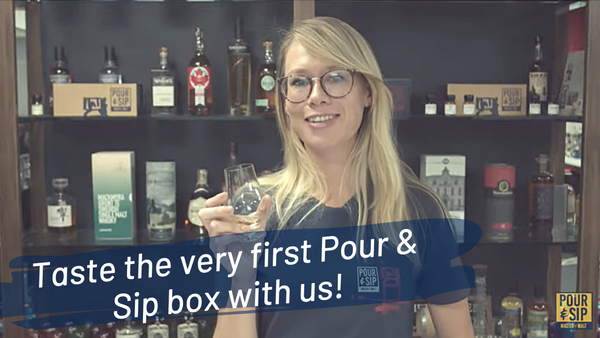Wine, whisky, and weather: the making of Australia’s Starward

Seeing as we’ve got our own Pour & Sip Exclusive Starward whisky this month, what better time to catch a minute with Callum Rixson, UK brand ambassador? We chatted all about the brilliance of Australian wine and whisky, and how almost nobody in the Starward team had worked in the whisky industry before.
“We think whisky is a very underutilised spirit, really,” Starward ambassador Callum Rixson begins. I start off by asking, what is Starward? “It’s a bottle of whisky you’d bring to the dinner table.” That’s not a regular tagline for a whisky, but then Starward never wanted to be regular.

Based in Melbourne, Starward was founded by David Fitale in 2007, but didn’t begin producing liquid until 2010. Fitale wanted to represent Australia as a serious player on the whisky map. “Rather than make a whisky that’s like Scotch in Australia, we wanted a whisky that really represented the country,” Rixson tells me. The key to this was Australian red wine casks, all sourced within a day’s drive away from the distillery.
Almost everyone working in pre-distillation came from the craft beer industry, so brewing and fermentation is their game, while those involved in the post-distillation are from the wine industry, mostly blenders and cask geeks. “I think there’s about two people who worked in whisky before they started at Starward, so it’s a completely different approach.”

Red wine casks have been used in the whisky industry for years, but usually just for shorter finishes, and these are generally fairly old red wine casks. What’s different about Starward? “A lot of the casks are wet-fill – within 24 hours the wine is out and the whisky is in,” says Rixson. For a lot of distilleries, geography isn’t in their favour, so that’s simply not possible. And this isn’t just a quick finish, it’s for the entire maturation.
Because the casks are sourced straight from the winery, they’ve not seen a drop of spirit before the Starward new make. “In theory they’re just virgin casks with a bit of wine in them,” Rixson tells me. “Because they haven’t had any high ABV spirit in them before, all of the high alcohol-soluble compounds that would usually be gone when you use ex-bourbon casks are all still in there – with a hint of red wine as well.”

Where the distillery is based in Melbourne is right in the south of Australia, so above the distillery is a desert bringing hot, arid winds down, but below the freezing ocean below brings rain and chills. In the time it takes you to get ready on a supposedly sunny morning, it can be chucking it down with rain. A bit of a nightmare for wardrobe logistics, sure, but it works absolute wonders for ageing whisky.
We got the lowdown on our Pour & Sip Exclusive, which was aged in first-fill red wine casks for three years, before being finished for 12 months in second-fill red wine casks. Think that sounds short? Because of that crazy Melbourne climate, it doesn’t do the spirit any favours to be aged for much longer.

Starward fills its casks at 55% (rather than the industry standard of around 63%), and almost always, the spirit will come out of the cask stronger than when it went in. Because the climate is arid for most of the year, water leaves the cask. This is in direct contrast to the Scotch industry, where the air is damp and cold, so the alcohol leaves the cask in the form of the angel’s share. Our P&S Exclusive went in the cask at 55% and came out at 55.4% – “ only a tiny amount!” Rixson remarks. That’s because it’s been known to increase up to 58%. It would only usually go down if it’s filled into a particularly saturated wine cask, which effectively dilutes the whisky, but that’s rare.
Of course, a fluctuating climate can also be temperamental, especially when you’re relying on grape and grain harvests. That’s why the distillery works with six different farms for the grain, and 60 different wineries for the casks. “We’re not pulling from them all, all the time,” Rixson states, but in doing so it means the team had to change their approach to how they make whisky, “not to try and be funky and cool, but because it was a necessity.”

When there’s 60 different wineries to take into account, and within that, the option of wet-fill or refill, Shiraz, Pinot Noir, or Cabernet Sauvignon wine varieties, housed in either American or European oak, how do you achieve consistency within a core whisky range? Rixson likens the work of the whisky blender to an artist: “American whiskey distilleries can only use American oak, working off that one flavour profile. Any small changes will be really obvious. Whereas, because we have a huge palette to work from, you can pick the flavours you want.” If you imagine trying to make a painting with three colours versus hundreds, you know which will be easier.
But this doesn’t mean that the brand is precious about mixing their whisky. “I think whisky is really underutilised in long drinks,” Rixson admits. Soda and tonic are some of his favourite go-tos, but I can’t help thinking that all I want to try our P&S Exclusive in is a Manhattan…
Let us know how you’ve enjoyed your Starward this month!
Jess 🥃



